Mission 370
BJP questions the opposition’s credentials and launches a campaign for a record haul of seats centred on Modi’s leadership
 Rajeev Deshpande
Rajeev Deshpande
 Rajeev Deshpande
Rajeev Deshpande
 Amita Shah
Amita Shah
 |
23 Feb, 2024
|
23 Feb, 2024
/wp-content/uploads/2024/02/Mission370.jpg)
Prime Minister Narendra Modi with BJP president JP Nadda, Defence Minister Rajnath Singh and Union Home Minister Amit Shah at BJP’s National Council meeting in New Delhi, February 17, 2024 (Photo: Getty Images)
IN HIS SPEECH at the Bharatiya Janata Party (BJP) National Council meeting on February 18, Union Home Minister Amit Shah named seven political clans, the leading lights of the opposition Indian National Developmental Inclusive Alliance (I.N.D.I.A.) , which were working solely to ensure the succession of the next generation of dynasts. Congress leader Sonia Gandhi, Nationalist Congress Party-Sharadchandra Pawar’s (NCP-SP) Sharad Pawar, Trinamool Congress chief Mamata Banerjee, Dravida Munnetra Kazhagam (DMK) leader MK Stalin, Rashtriya Janata Dal (RJD) patriarch Lalu Prasad, and Shiv Sena faction leader Uddhav Thackeray, all want family members to assume political office. The late Samajwadi Party (SP) leader Mulayam Singh had bequeathed the party to his son Akhilesh. While all prominent members of I.N.D.I.A. shared the goal of foisting their wards on the public, Prime Minister Narendra Modi works for the benefit of all sections, discarding false binaries that made sectional identities a zero-sum game. Modi has shown that, Shah said, the government can work for farmers and the poor and also put the economy back on track. The conditions in both cities and villages can improve even as India’s standing rises in the international community. He attacked the opposition alliance of being in cahoots with billionaire George Soros, known to promote political projects and who has made no secret of his animosity towards the Modi government.
The key messages of Modi’s address to the party cadre and the resolutions adopted emphasise the government’s performance, including the absence of corruption in high places, the aim of making India a developed nation by 2047, and the spiritual and cultural renaissance embodied by the consecration of the Ram Mandir at Ayodhya. The slogan ‘Desh ki Asha, Vipaksh ki Hatasha (Nation’s Hope, Opposition’s Frustration)’ builds on Modi’s promise to accelerate development and take “even bigger decisions” and places his target of 370 Lok Sabha seats in the larger context. Winning a third consecutive term with a majority—let alone 370 seats—is a demanding task. Is it doable? BJP leaders point out that the gap between Modi and the opposition has only widened since 2019. I.N.D.I.A. is fracturing even before the elections and has no narrative to offer. They answer the 370 question by a counter-query: Why should voters support the opposition? Their contention is that, setting aside core supporters and anti-BJP sections, there is no traction for Congress and regional parties. On the other hand, Modi’s categorisation of what he calls the “four biggest castes” as farmers, women, youth, and the poor is a rebuttal of the opposition’s attempts to play backward-caste politics and an identification
of key voting blocs. Modi and BJP are working assiduously to woo the youth through facilitating education and sport, and there is an unprecedented focus on women as a key demographic. Despite the current agitation by farmers being limited to Punjab led by Left-aligned unions, the Centre is at pains to come across as responsive, offering various solutions that include guarantees for minimum support price (MSP) that stop short of legislation. In keeping with Modi’s directives, Union ministries are straining to ensure maximum coverage of welfare schemes. The emotive appeal of the Ram Mandir, feel BJP functionaries, is a force multiplier. In the given situation, no target is impossible, they aver.
The consensus in Delhi’s commentariat ahead of the 2019 Lok Sabha election proved wide off the mark, yet again. Five years earlier, political pundits had been wrong again when the grapevine gave BJP around 180 seats, based on conventional considerations of caste and regional factors. The Modi government’s first term should have provided some food for thought but the alliance between SP and the Bahujan Samaj Party (BSP) in Uttar Pradesh (UP) that returns 80 Lok Sabha seats swayed opinions. As did the view that BJP had hit the ceiling in several north Indian states and was unlikely to repeat its virtuoso performance. It was felt BJP would stop at around 240 seats, well short of a majority. As it turned out, BJP won 303 seats, up from 282 in 2014, and its alliance reached a tally of 353. The party’s own vote share rose more than 7 per cent to 37.7 per cent and the National Democratic Alliance (NDA) received 45 per cent of the votes. A good many opinion polls, conducted prior to voting, offered predictions that matched the punditry, and given the variance with the actual result, raised the question whether they were based on voter response or tweaked in accordance with the prevailing wisdom. The exit polls were closer to the mark and bore evidence of at least some pollsters hastily re-jigging numbers as the mood of the electorate revealed itself. Having repeatedly underestimated Modi’s popular connect, soothsayers are being cautious this time round even though he has set a daunting target of 370 seats for BJP.
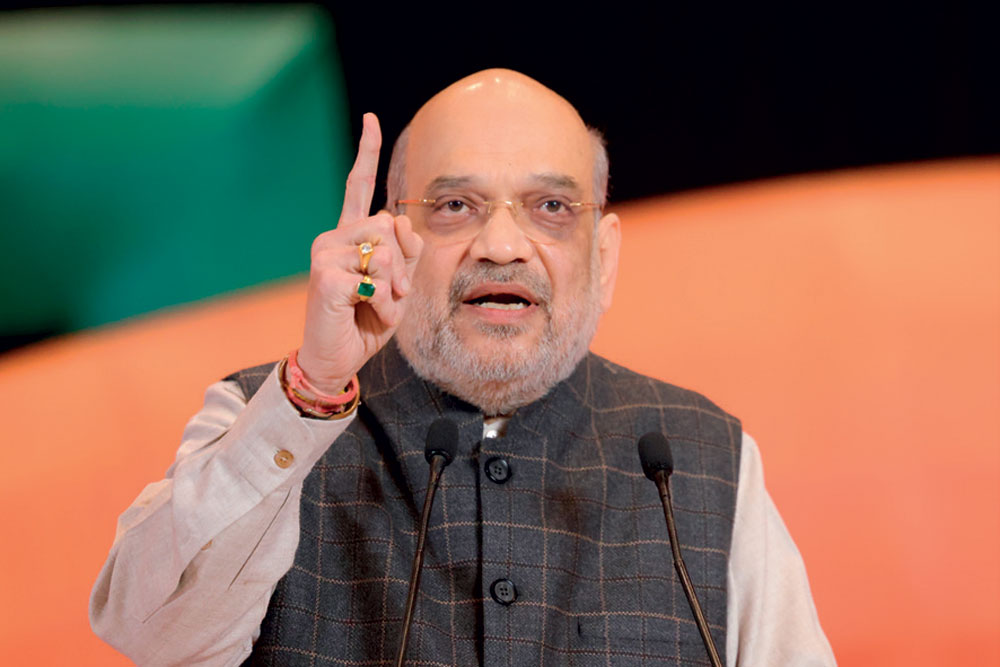
A PART OF THE reason the momentum appears to be with BJP is its success in roping in big and small regional allies since it lost the Karnataka Assembly election in May 2023. This is quite a contrast to the time it first formed a government in May 1996, and despite being the largest party with 161 seats, could not find allies to cover the deficit of 111 MPs for a majority in Lok Sabha. The story goes that a committee of BJP leaders that met dutifully every evening would be informed by the late Jaswant Singh that “two gentlemen” from the Northeast were willing and waiting. There was no accretion to this modest number and while the identities of the two MPs were never revealed, the Vajpayee government resigned after 13 days. BJP leaders had indeed held discussions with outfits like the Telugu Desam Party (TDP), but found their demands difficult to accept. One BJP leader said the wishlist of TDP leader N Chandrababu Naidu, then chief minister of Andhra Pradesh, added up to several hundred crore rupees of Central funds per party MP. BJP’s fortunes improved and Atal Bihari Vajpayee went on to form two governments that were in office for a little more than six years. Although NDA commanded a comfortable majority from 1999 onwards, the dependence on allies made it difficult to move on BJP agendas like the Ram Mandir, Article 370, and a uniform civil code. The NDA manifesto for the 2004 General Election did include the Ram Janmabhoomi demand, but the alliance was ousted from office. A recap of events is intended to bring out the current situation as Lok Sabha polls approach. There is a steady inflow of leaders from opposition parties even as NDA now has close to 40 constituents. Though some of these parties are small, they are not without influence and can add to the vote share and seats. A target of 370 needs BJP to think of every seat that can be won.
At BJP’S national council meeting, Union Home Minister Amit Shah named political clans working solely to ensure the succession of the next generation of dynasts. On the other hand, he said, Prime Minister Narendra Modi was working for the benefit of all
The loss of the BJP government in Karnataka gave the party brass plenty to think about. The Basavaraj Bommai government lost because it was unable to implement schemes efficiently and also failed to communicate its initiatives. Its decisions, such as carving out a quota for the influential Vokkaliga community, did not reach the intended beneficiaries and BJP failed to counter allegations of “40 per cent commissions” in government contracts despite the lack of evidence. But over and above, BJP strategists did not detect public anger over inflation that had risen after the Ukraine war. The price of cooking gas at `1,000 a cylinder crystallised the mood against the party. BJP hopes of denting the Janata Dal (S) in the latter’s Old Mysuru strongholds did not bear out, reflecting the resilience of former Prime Minister HD Deve Gowda and son HD Kumaraswamy. The Lok Sabha election was always expected to be different with Modi at the centre of the voter’s consideration. Ahead of the 2019 polls, the more astute Congress leaders had admitted that the party’s success in state elections might not have much bearing on a national contest. This time, too, Congress did not realise the benefits of being generous in victory. Gladdened by its landslide of 135 seats in a House of 224, the party had no need to accommodate anyone. Yet, most media reports on the election had noted that voters saw Modi as the choice in 2024. While Congress failed to reach out to the Gowdas, BJP did and announced a tie-up in September 2023, a little more than four months after the setback. The convergence of BJP and JD(S) votes makes the alliance a formidable force, placing Congress at a highly disadvantageous position. The unease in the Congress camp is evident going by appeals to regionalism and attempts to rake up ‘federal’ issues by claiming Karnataka is not being given its due share of taxes.
The resolution adopted by both Houses of Parliament on February 10, hailing the consecration of the Ram Mandir as the beginning of a new era of governance and public welfare, and praise from the Lok Sabha and Rajya Sabha chairs for Modi for playing an “unparalleled role” in uniting the nation, mark a tectonic shift in political discourse over the past decade. The inauguration of the temple with Modi performing the religious duties of the yajman (host) is a high point for BJP and the Sangh Parivar. No single issue or event, even one with as wide an impact as the Ram Mandir, may sway voters despite the evident goodwill. In 2019, too, while the decision to retaliate against the Pulwama terror attack by an airstrike on a Jaish camp at Balakot in Pakistan-occupied Kashmir (PoK) was timely, it would not have worked in isolation if the Modi government’s welfare schemes did not reach voters. Similarly, while the Ram Mandir and the abrogation of Article 370 add to a pro-BJP sentiment and fire the nationalist-Hindutva base, the party has put performance of the government at the centre of its campaign with the tagline ‘Sapne nahin, haqiqat ko bunte, tabhi to sab Modi ko chunte (We weave reality, not dreams, and that is why everyone prefers Modi)’. The transformation of poor households by cooking gas and electricity connections and house ownership, a fast-growing economy and India’s rising international profile project a forward-looking agenda. The prime minister’s invocation of a third term, confidently predicting that voters have made up their minds, is a deliberate decision to make his leadership the heart of the election. It is a way of rallying the faithful and an endeavour to ensure a heavy turnout at polling booths—the goal of all poll strategists.
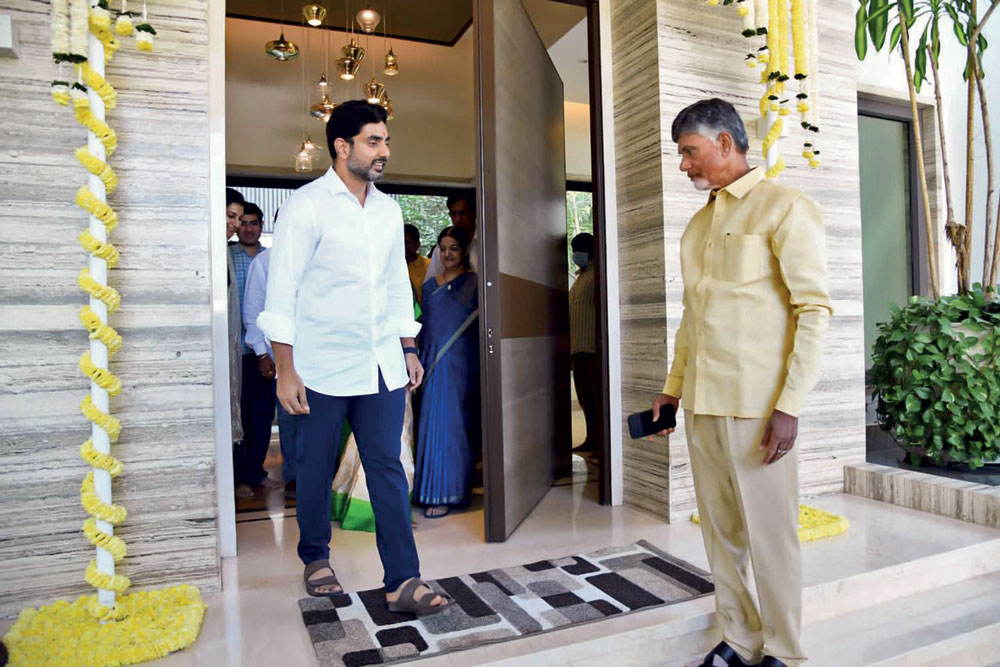
While Modi’s leadership, the Viksit Bharat (Developed India) campaign to maximise coverage of Central schemes and economic development are part of BJP’s big narrative, the nuts and bolts of alliances and seat-sharing are being worked out diligently. The most recent entrant into NDA, Rashtriya Lok Dal (RLD) chief Jayant Chaudhary, will consolidate BJP’s dominance in western UP. In the 2022 Assembly polls, RLD won nine of 33 seats it contested as a partner of SP. Its wins were limited to areas of its core influence like Shamli, Budana, Thana Bhawan, and Chaprauli. Some victories were narrow. In the past two Lok Sabha elections, Chaudhary’s fellow Jats had overwhelmingly voted BJP and the Ram Mandir is certainly a catalyst for the community. The Bharat Ratna to Jayant’s grandfather, legendary farmer leader and former Prime Minister Chaudhary Charan Singh, was welcomed by RLD and smoothed its entry in NDA. BJP’s dominance in UP in Lok Sabha polls is disrupted only in areas where demographics are adverse. SP and BSP—they did not have an alliance in 2019—won seats like Saharanpur, Nagina, Rampur, Amroha, and Moradabad in northwest UP; and Ghazipur, Ghosi, Azamgarh, and Ambedkarnagar in eastern UP. RLD’s entry adds to BJP’s strength in western UP, minimising leakage of Jat votes, while SP needs to consider BSP’s continued ability to attract a share of non-BJP votes. In recent weeks, TDP leader Naidu, once sought after as a kingmaker in Delhi, waited for a meeting with Amit Shah. Naidu, who had been in the United Front government and was also an ally of the Vajpayee government, hopes to return to the NDA fold for the third time. He had sought to stitch an anti-BJP coalition in 2019 but gave up after the experiment failed. He has reached out to BJP over the last year and recently praised the prime minister, calling him a visionary. At a meeting that went on late into the night, the two sides discussed seat-sharing arrangements. TDP sources said talks are in progress on the party joining NDA and that the need to “rebuild” Andhra Pradesh, currently ruled by Naidu’s bitter rival and YSR Congress Party (YSRCP) leader YS Jagan Mohan Reddy, was also discussed at the meeting. With talks still on, Naidu’s son Nara Lokesh is evasive about the specifics of an alliance, saying TDP and actor-turned-politician Pawan Kalyan’s Jana Sena Party (JSP), an NDA constituent, have decided to fight the elections together. Soon after, Reddy, who has maintained cordial ties with the Centre, backing it on various legislations, headed to Delhi to meet Modi. The chief minister reiterated his demand for special category status for the southern state, where Assembly polls will be held along with the General Election. Naidu has been at the receiving end of his rival’s attentions, having been jailed in a case of alleged corruption. BJP has supported Naidu’s claim that the case has been foisted on him.
Talks are in progress on TDP joining NDA and the need to ‘rebuild’ Andhra Pradesh, currently ruled by Chandrababu Naidu’s bitter rival and YSRCP leader Jagan Mohan Reddy. Naidu’s son Nara Lokesh, however, is evasive about the specifics of an alliance
Despite exuding confidence about sweeping the Lok Sabha polls, BJP is leaving nothing to chance. The party has no seat from Andhra Pradesh in Lok Sabha or in the Assembly and a vote share of less than 1 per cent in both. The test after the Karnataka defeat saw BJP revise its playbook even as it rejected the temptation of mimicking Congress’ populism. Elections in Madhya Pradesh, Rajasthan, and Chhattisgarh were a direct confrontation with Congress, and BJP scripted wins by emphasising its record and the Modi factor, and exploiting its rival’s credibility deficit. In states in the south and the east, where regional parties are in office, BJP is banking on allies with an eye to expand its footprint. Last time round, BJP surprised Trinamool by winning 18 seats at a time when Chief Minister Mamata Banerjee was harbouring national ambitions. NDA’s rivals in Maharashtra were a formidable alliance of Uddhav’s Shiv Sena, NCP and Congress. BJP’s success in first wooing the majority Sena faction and then doing the same with NCP were astute moves. The Eknath Shinde-BJP combine needed a boost and NCP breakaway leader Ajit Pawar has provided the shot in the arm. Nitish Kumar and RJD were a force to reckon with despite the chief minister’s diminution in the previous state polls. Kumar’s return marks a dramatic unravelling of the I.N.D.I.A. bloc. It managed to woo back Kumar, who was at the forefront of I.N.D.I.A.’s formation. In Tamil Nadu, BJP is keeping its doors open for former ally AIADMK to return to NDA, in a bid to ensure DMK does not repeat its 2019 tally, when it won 38 of the 39 Lok Sabha seats. BJP is also banking on its calculations that Congress may not be able to repeat its performance in Kerala, Tamil Nadu and Punjab, from where it won most of its seats. In Punjab, speculation about BJP and old ally Akali Dal has not died out but the current agitation by farm unions is a damper, at least for the present. In Kerala, where BJP has never won a Lok Sabha seat, the party is reaching out to the Christian community although the results are unclear. Addressing the ET NOW Global Business Summit 2024 recently, Shah said, “We always want that our alliance grows and we always welcome new allies. Our ideology has remained the same since the days of Jana Sangh. Those who like to join us can come.”
The masterful communicator that he is, the Prime Minister has conveyed a bouquet of messages that not only appealed to constituencies but also sought to energise the party machinery for a record-breaking effort
BJP’s self-assurance was evident at the recent party National Council meet in the capital’s sprawling new Bharat Mandapam. Modi reflected the confidence, saying he already has invitations from various countries for events and visits in July, August and September, well after the elections. “They also know, aayega to Modi hi (Modi will be back).” While setting the target for himself, “not to enjoy power but work for the nation”, he laid out the roadmap for the party. “In the next 100 days, you need to connect with every new voter, reach every beneficiary, every section, every community, and every person who believes in any religion. We need to gain the trust of everyone.”
Modi, while repeating the target of 370 seats to party delegates at the National Council, gave the number a symbolism and political context, saying it was a tribute to Jana Sangh founder Syama Prasad Mookerjee who had died agitating for the revocation of Article 370. The masterful political communicator that he is, the prime minister conveyed a bouquet of messages that not only appealed to all constituencies but also sought to energise the party machinery for a record-breaking effort. When Modi was chief minister of Gujarat, in the midst of a tough campaign, he had told aides that the government had done nothing to deserve being voted out. He clearly believes he has earned people’s trust and can ask for even more .

/wp-content/uploads/2025/07/Cover_Dalai-Lama.jpg)






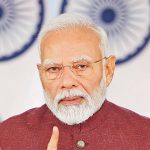

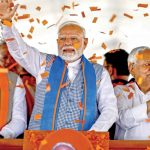

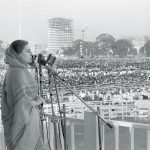

More Columns
Elon Musk Floats New Party in US Politics Open
Modi criticism of UNSC, WTO voices India’s angst Rajeev Deshpande
Moonlight Sonata: What the Soham Parekh Saga Reveals About Work Today V Shoba